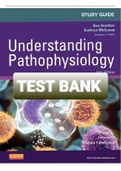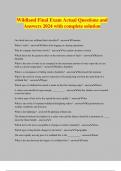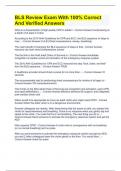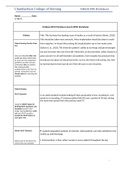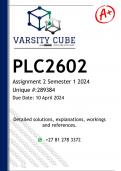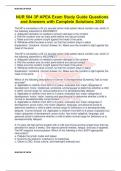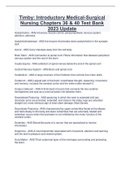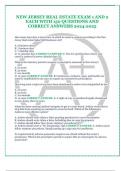Exam (elaborations)
Exam (elaborations) TEST BANK UNDERSTANDING PATHOPHYSIOLOGY, 5TH EDITION HUETHER AND MCCANCE
- Institution
- Harvard University
TEST BANK UNDERSTANDING PATHOPHYSIOLOGY, 5TH EDITION HUETHER AND MCCANCE Chapter 01: Cellular Biology Huether and McCance: Understanding Pathophysiology, 5th Edition Chapter 01: Cellular Biology Test Bank MULTIPLE CHOICE 1. A student is observing a cell under the microscope. It is observed ...
[Show more]
